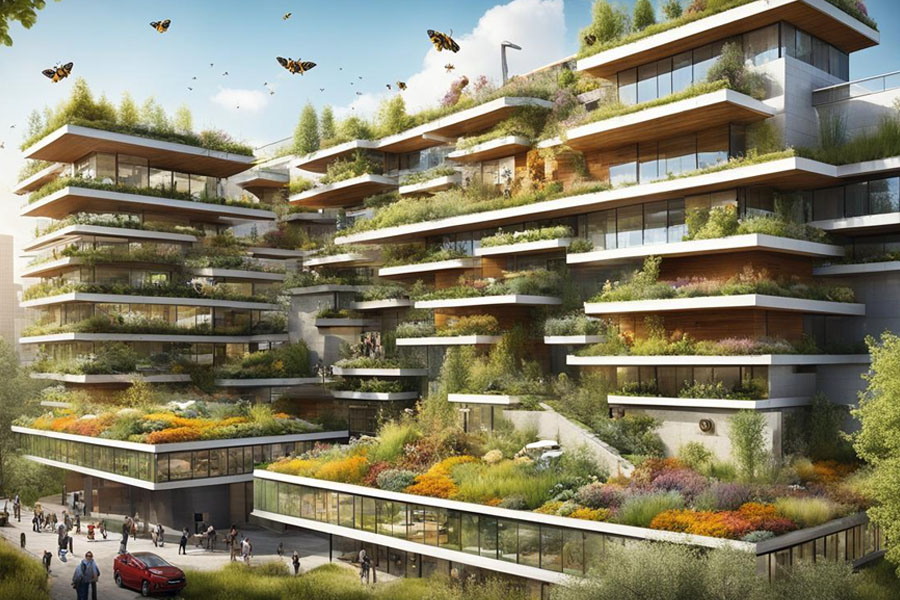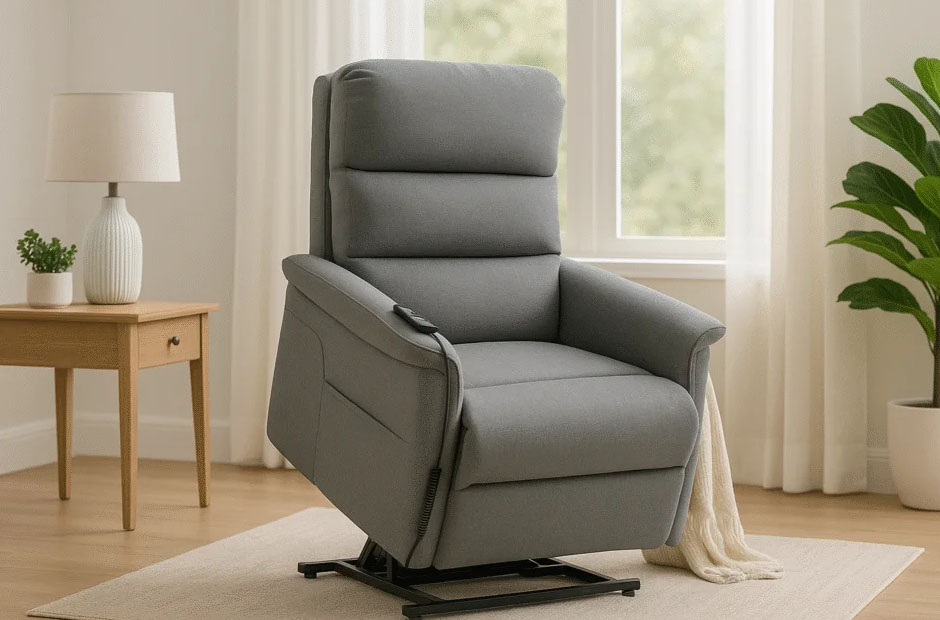Now Reading: Building Habitats That Prioritize Wellbeing
-
01
Building Habitats That Prioritize Wellbeing
Building Habitats That Prioritize Wellbeing

Designing for Presence and Possibility
Imagine walking into a room that breathes — soft light pooling across a wooden floor, a window framing a small garden that hums with bird song. That momentary breath of ease isn’t accidental; it’s the result of design choices that say, in no uncertain terms, “You matter here.” In long-term care settings, these decisions are more than pretty details. They shape days, moods, and the tiny rituals that give life meaning: making tea, a neighbor’s laugh drifting from the lounge, the quiet of a favorite chair by the window.
Thoughtful layout does heavy lifting. Open sightlines reduce confusion and isolation; windows and daylight help regulate sleep and mood; tactile finishes and warm color palettes make interiors feel human rather than institutional. The architecture and interior design together form an invisible caregiver: they reduce stress, encourage movement, and subtly invite connection.
Mobility, Safety, and Dignity
Practical design choices are quietly revolutionary when they preserve dignity. Handrails that follow natural walking lines, doors wide enough for ease without shouting “medical facility,” and non-slip floors whose textures are predictable underfoot — these are the details that let residents move with fewer interruptions and fewer fears. Good design anticipates the small emergencies and removes the obstacles before they appear.
Accessibility doesn’t mean sterile or clinical. Thoughtful fixtures, discreet sensor systems, and accessible furniture let people retain independence while keeping risk low. The result is a place where autonomy and safety coexist rather than compete.
Personalization and the Feeling of Home
A person’s room should feel like a continuation of their life, not a pause. Allowing personal items, photographs, favorite blankets and mementos to occupy space sends a powerful message: this is your story, and it continues here. When rooms reflect identity — not just functionality — emotional security deepens and everyday life gains texture.
Communal spaces play a complementary role. Lounges that feel like living rooms, kitchens open to conversation, and nooks for quiet reading create a sense of belonging without pressure. The most successful environments are those that let residents choose when to be seen and when to step away, giving both community and solitude equal stage time.
Crafting Balance: Privacy vs. Community
Finding the sweet spot between togetherness and privacy is an art. Some residents thrive on shared activity and the hum of others; some need quiet corners where memories can be sifted in peace. Design should make both effortless. Private rooms with ensuite bathrooms respect personal rhythms, while shared activity areas, small group rooms, and flexible community spaces invite social life without overpowering it.
One core principle is choice. When residents can decide their days — join a singalong, take a stroll, or sit alone with a book — they gain agency. Agency is a quiet antidote to institutional loneliness; it’s the difference between being cared for and living with care.
The Role of Technology and Gentle Innovation
Technology in care settings should be an invisible ally, not a spotlighted substitute for human touch. Discreet monitoring systems can alert staff to risk without intruding on dignity. Personalized playlists and familiar audio cues can unlock memories and calm agitation. Sensory rooms that combine gentle light, texture, and sound provide moments of calm for residents with dementia or sensory sensitivities.
Innovation shines when it supports relationships. Telehealth, for instance, expands access to specialists without replacing the face-to-face conversations that matter most. The best tech solutions enhance autonomy and preserve intimacy rather than erasing them.
Sensory Design and Emotional Rhythm
Sound, scent, and light craft an emotional narrative across the day. A dawn palette that eases people into waking, afternoon light that encourages activity, and dimmer, warmer evenings that cue rest — these patterns matter. Acoustic design reduces intrusive noise and creates pockets of calm for reading or reflection. Gardens and outdoor spaces contribute a multisensory palette: the smell of earth after rain, the rustle of leaves, and the unpredictable choreography of wildlife all anchor residents in the present.
Sensory design also means honoring memory. Objects that feel familiar, music that traces back to meaningful eras, and tactile materials that invite touch can all be arranged to reinforce continuity of self.
Community Connection and Place
A care environment that prioritizes wellbeing resists isolation by design. It opens its doors — figuratively and literally — to the neighborhood. Regular visits from volunteers and school groups, accessible design that invites family participation, and outings to local shops and cultural spots keep life vivid and connected. Being part of a wider, living town means residents remain woven into a community fabric rather than tucked away from it.
Location choices matter: proximity to services, walkable streets, and the possibility of spontaneous neighborhood encounters are all quiet contributors to emotional health. A well-sited facility lets residents maintain ties to the places and rituals that shaped them.
Staff Culture and Everyday Rituals
Built environments are only as kind as the people who inhabit them. Staff trained to see residents as whole people — with histories, quirks, and preferences — transform spaces into homes. Everyday rituals, whether it’s the morning greeting, a shared meal with choice, or a respectful approach to personal care, animate architecture with care. Recruitment, training, and leadership that prioritize empathy ensure that design and culture march in the same direction.
FAQ
What are the most important design elements for wellbeing in care homes?
Good daylighting, safe and accessible circulation, personalized rooms, and flexible communal spaces are the essentials that foster both safety and emotional comfort.
How does personalization help residents?
Allowing personal items and familiar objects maintains identity and continuity, which supports emotional stability and reduces disorientation.
Can technology improve wellbeing without being intrusive?
Yes — discreet monitoring, personalized music, and sensory-room technology can enhance safety and comfort while preserving dignity.
How should care homes balance privacy with social opportunities?
Provide private rooms and quiet nooks alongside inviting communal areas, and center resident choice so individuals decide when to engage.
Why is staff culture as important as physical design?
Staff behavior animates space; respectful, empathetic care practices turn well-designed rooms into genuinely nurturing places.
What role does location play in resident wellbeing?
Proximity to community amenities and opportunities for outside interaction keeps residents connected to everyday life and reduces feelings of isolation.





















